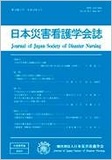Japanese
English
- 有料閲覧
- Abstract 文献概要
- 参考文献 Reference
要約
【目的】千代田区内の中小規模医療機関の災害対策の実態とニーズを明らかにする.
【方法】千代田区内の全474施設を対象とし,病床や職員数等の病院基本情報,備蓄状況,災害関連マニュアルの整備状況,防災訓練・職員への教育に関する質問紙調査を行った.
【結果】65施設より回答が得られ(回収率13.7%),30施設(46%)が個人経営であった.備蓄状況では,食料・飲料水の平均備蓄量は,職員用がそれぞれ13.6食,1.6日分と患者用に比べ最も多かった.また,18施設(27.6%)が災害関連マニュアルを有し,防災訓練の実施は27施設(44.2%)が行っていなかった.
【結論】多くの施設で備蓄,訓練を含めた災害対策が十分に行われていなかった.中小規模医療機関各施設で災害対策に関するコスト,時間,人材の確保が難しいことが示唆された.職員全体の防災意識を高めると同時に,災害対策の外部支援が必要である.
Purpose: The purpose of this study was to assess the disaster preparedness and needs of small and mid-sized hospitals in Chiyoda City, Tokyo.
Method: A questionnaire survey was conducted with items on sample characteristics, stockpiles, logistics systems and the current process of disast er manual updating.
Results: Among the 474 hospitals invited to take part, 65 did so (response rate: 13.7%) ; 30 of these (46%) were private, and food/drinking water stockpiles for staff were mentioned in the most common responses (n = 24; 40.6%), (n = 36; 65.4%). A total of 18 hospitals (27.6%) had disaster preparedness manuals, but 27 (44.2%) did not conduct disaster preparedness drills.
Conclusion: Most responding hospitals reported insufficient levels of disaster preparedness in areas such as stockpiling and disaster drills. It was suggested that this was due to difficulties in securing financial, temporal and human resources for disaster preparedness at small and mid-sized hospitals. Staff at such facilities need to focus more on disaster preparedness and external forms of support such as the creation and updating of related manuals.
Copyright © 2017, Japan Society of Disaster Nursing All rights reserved.


